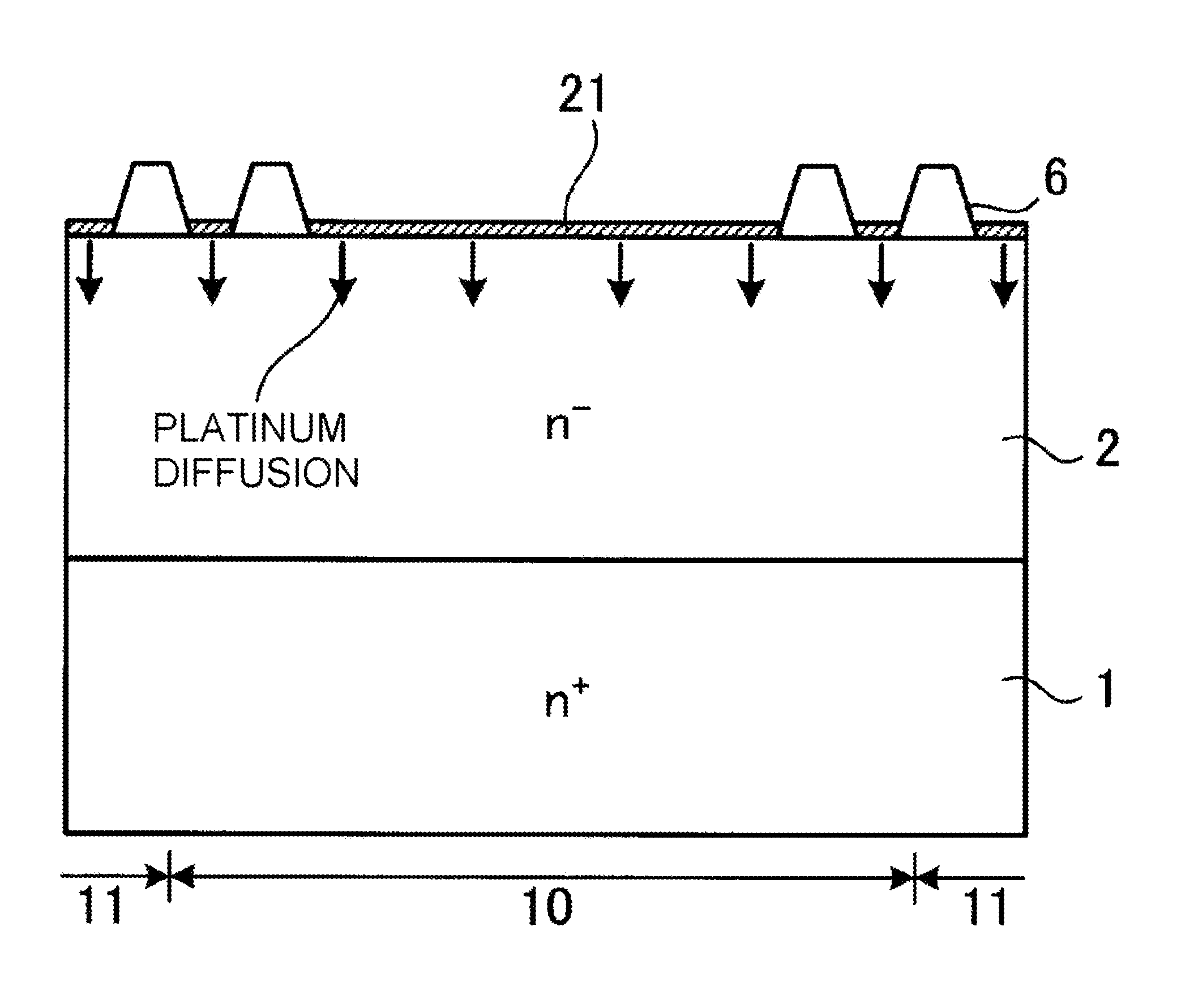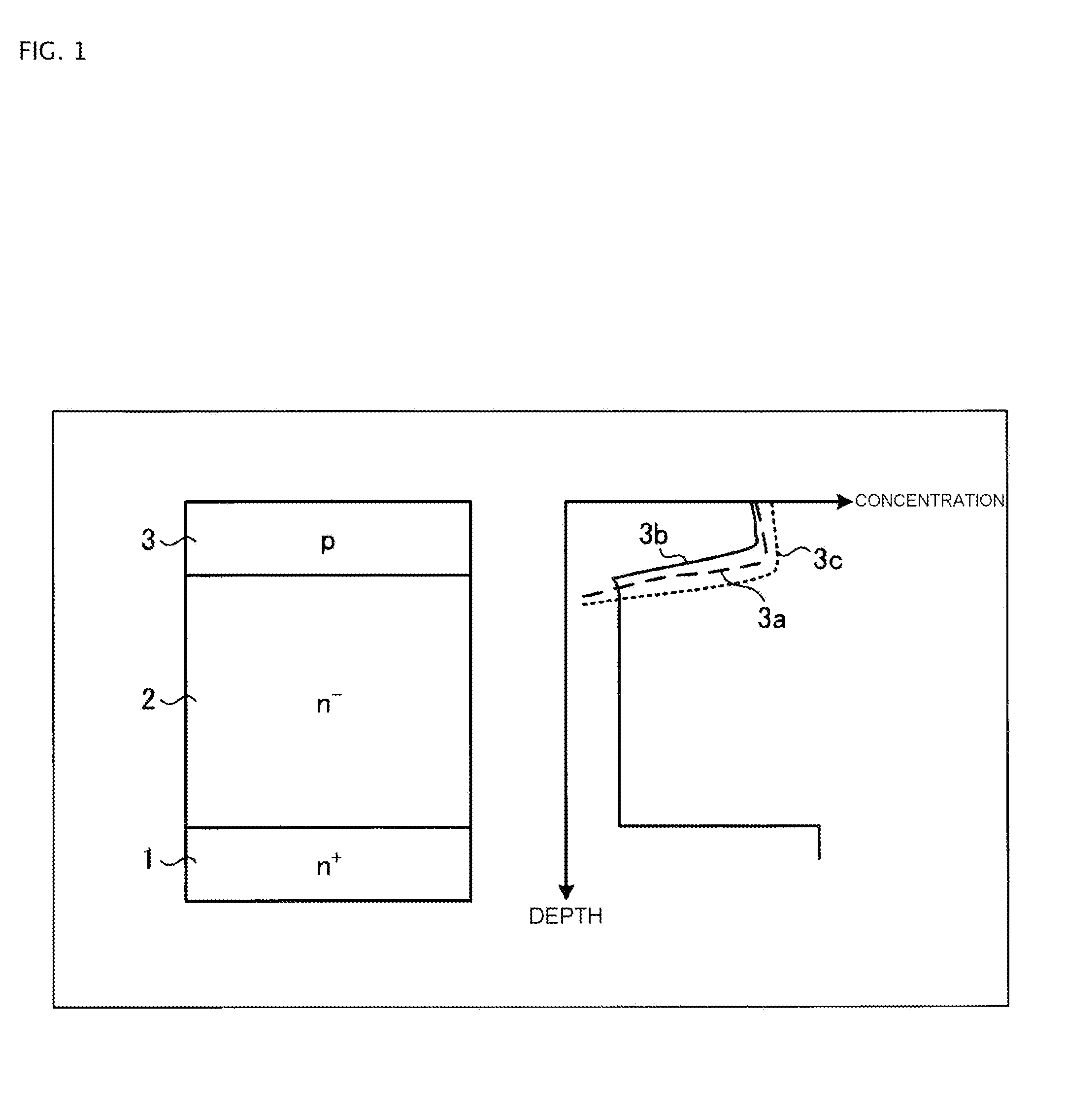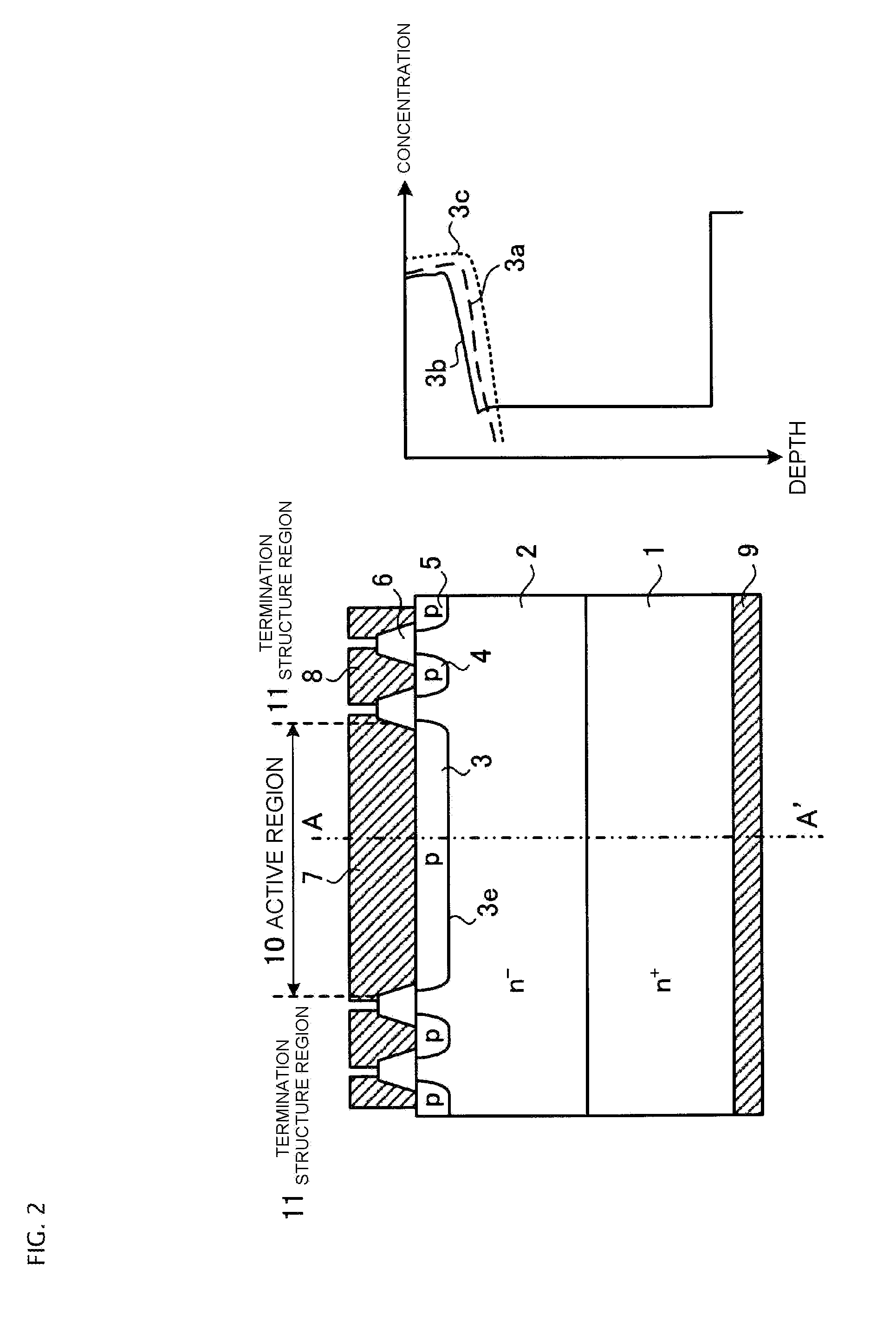Semiconductor device and semiconductor device manufacturing method
- Summary
- Abstract
- Description
- Claims
- Application Information
AI Technical Summary
Benefits of technology
Problems solved by technology
Method used
Image
Examples
embodiment 1
[0105]Next, a description will be given of the structure of a semiconductor device according to Embodiment 1. FIG. 2 is a sectional view showing the configuration of the semiconductor device according to Embodiment 1. FIG. 2 shows the sectional structure of the semiconductor device according to Embodiment 1, and the impurity concentration distribution in the depth direction. The semiconductor device according to Embodiment 1 shown in FIG. 2 is a diode wherein p-type guard ring region (second inversion region) 4 and p-type channel stopper region 5 of a termination structure region 11 are provided in the basic structure of the diode shown in FIG. 1.
[0106]Termination structure region 11, being a region from an end portion of active region 10 to an outer peripheral end portion of the semiconductor substrate (semiconductor chip), is a structural portion that encloses active region 10, and alleviates the electrical field intensity of the semiconductor substrate front surface (the surface ...
embodiment 2
[0115]Next, a description will be given of a method of manufacturing the semiconductor device according to Embodiment 1 as a semiconductor device manufacturing method according to Embodiment 2. FIGS. 3 to 6 are sectional views showing conditions partway through the manufacture of the semiconductor device according to Embodiment 2. For example, the description will be given taking the rated voltage to be 1,000V and the transition metal used in the formation of p-type inversion enhancement region 3b to be platinum (the same also applies in other Embodiments 3 and 5). Firstly, n− type drift layer 2 with a thickness of, for example, 100 μm is epitaxially grown with a resistivity of 60 Ωcm on n+ type semiconductor substrate 1 forming an n+ type cathode layer.
[0116]Next, oxide film 6 with a thickness of, for example, 900 nm is formed using thermal oxidation on the surface of n− type drift layer 2. The thickness of oxide film 6 is arbitrarily determined in accordance with the dose and pene...
embodiment 3
[0125]Next, a description will be given of a semiconductor device manufacturing method according to Embodiment 3. FIGS. 7 and 8 are sectional views showing conditions partway through the manufacture of the semiconductor device according to Embodiment 3. The semiconductor device manufacturing method according to Embodiment 3 differs from the semiconductor device manufacturing method according to Embodiment 2 in that the process order of the proton irradiation and platinum diffusion is changed, so that the platinum diffusion is carried out before the proton irradiation. Specifically, the processes of the semiconductor device manufacturing method according to Embodiment 3 are carried out as follows.
[0126]Firstly, in the same way as in Embodiment 2, oxide film 6 and phosphorus silicon glass are formed sequentially on the surface of n− type drift layer 2 deposited on n+ type semiconductor substrate 1, after which plasma treatment is carried out on oxide film 6 surface (FIG. 3). Next, in ...
PUM
 Login to View More
Login to View More Abstract
Description
Claims
Application Information
 Login to View More
Login to View More - R&D
- Intellectual Property
- Life Sciences
- Materials
- Tech Scout
- Unparalleled Data Quality
- Higher Quality Content
- 60% Fewer Hallucinations
Browse by: Latest US Patents, China's latest patents, Technical Efficacy Thesaurus, Application Domain, Technology Topic, Popular Technical Reports.
© 2025 PatSnap. All rights reserved.Legal|Privacy policy|Modern Slavery Act Transparency Statement|Sitemap|About US| Contact US: help@patsnap.com



